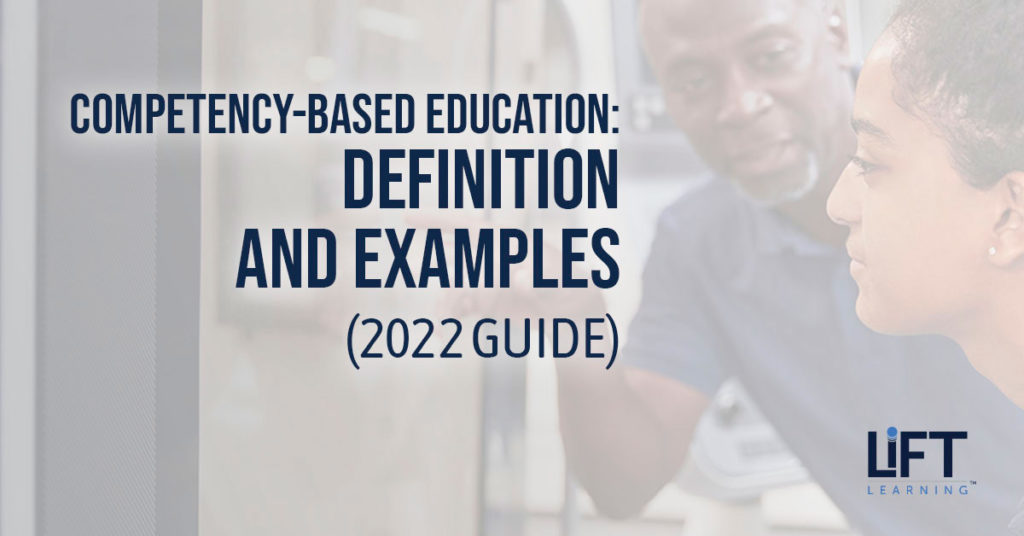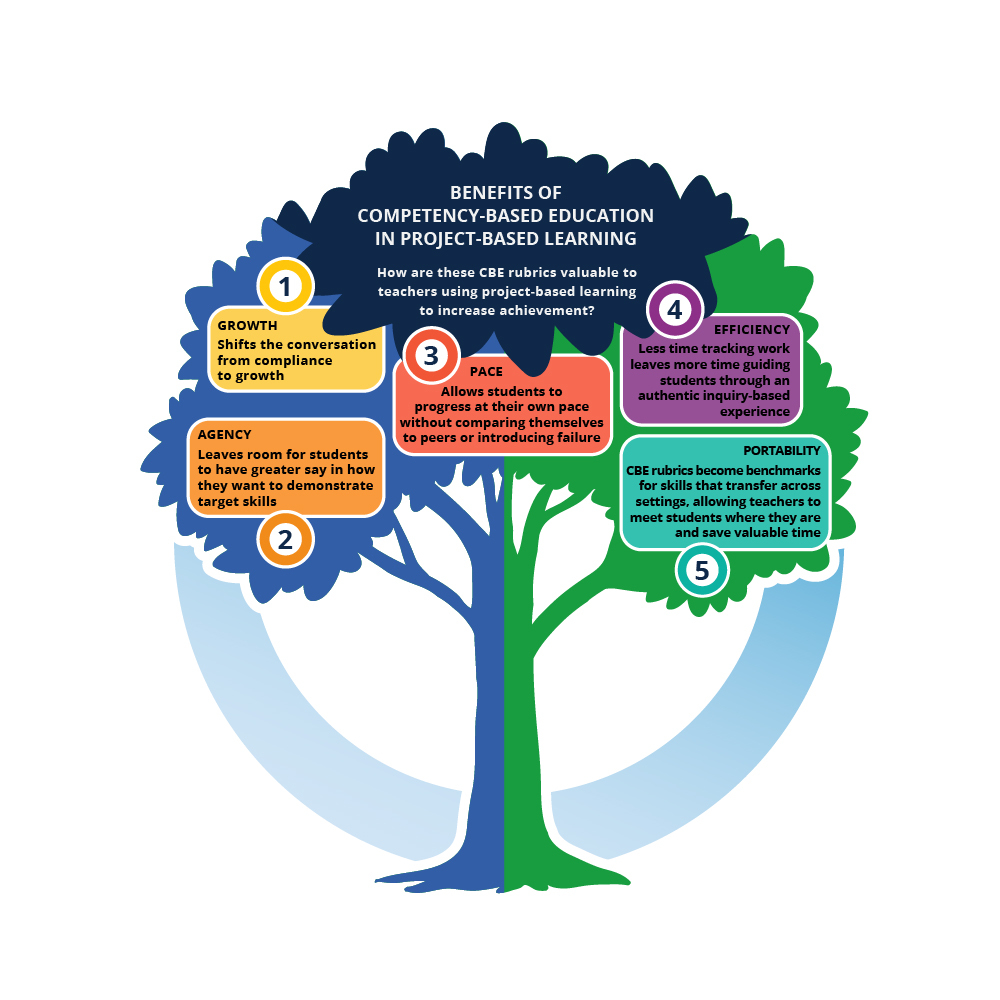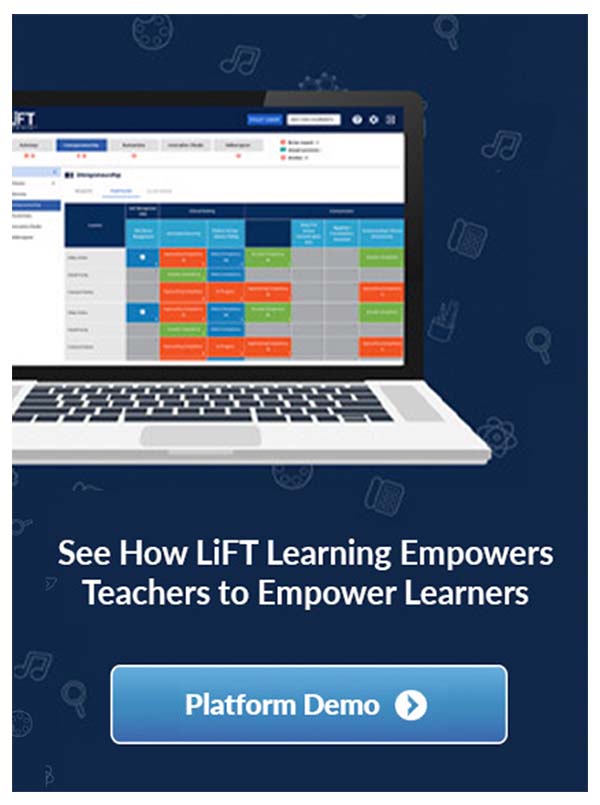Competency-Based Education: Definition and Examples

In this blog, we will define Competency-Based Education (CBE) and discuss how the essential components of CBE work together to transform learning in K12 schools and districts. We will also examine some of the specific benefits CBE brings to learners, teachers, and communities. Finally, we will present two CBE classroom scenarios with examples.
What is Competency-Based Education?
CBE Definition: Competency-Based Education (CBE) is a method of learning that respects the unique pace and approach each student requires to develop essential skills. CBE is personalized, flexible, and performance-oriented. It emphasizes and encourages the demonstration of essential skills applied not just in the classroom, but in any real-world situation.
Learner agency is emphasized over compliance in most CBE models. CBE designers recognize that self-direction, independence, ownership, and autonomy are essential for healthy development and lifelong success. Therefore, opportunities to develop learner agency are deliberately built into CBE models, rather than left to chance. They include goal setting, reflection, metacognition, and self-assessment.
Defining Competency-Based Education
The first step is for learners to articulate what their future success looks like, and to set learning goals that move them in the right direction. This personal relevance helps intrinsic motivation and sustained engagement. Next, they reflect on their present strengths and weaknesses in order to craft a pathway to develop the skills their goal requires.
In CBE, skill-based rubrics are used to measure achievement during the journey. Rather than using traditional task-based rubrics to measure compliance with an assignment, in CBE, students continuously focus on skill acquisition. Each level of skill acquisition, from emerging to mastery, is described in student-friendly language.
Self-efficacy—the belief in one’s own ability to succeed – is a key goal of agency-oriented CBE. Therefore, students frequently self-assess their skill level which helps them take increasing responsibility for reaching their goals. Along the way, learners look for insights into their own learning process, which is called metacognition. This continuous cycle of goal setting, reflecting, self-assessment, and metacognition teaches students to ‘learn how to learn’, and can be applied to any area of interest.
The Aurora Institute is a global non-profit with the mission “to drive the transformation of education systems and accelerate the advancement of breakthrough policies and practices to ensure high-quality learning for all,” defines CBE in their updated definition of competency-based education as:
- Students are empowered daily to make important decisions about their learning experiences, how they will create
and apply knowledge, and how they will demonstrate their learning. - Assessment is a meaningful, positive, and empowering learning experience for students that yields timely, relevant,
and actionable evidence. - Students receive timely, differentiated support based on their individual learning needs.
- Students progress based on evidence of mastery, not seat time.
- Students learn actively using different pathways and varied pacing.
- Strategies to ensure equity for all students are embedded in the culture, structure, and pedagogy of schools and
education systems. - Rigorous, common expectations for learning (knowledge, skills, and dispositions) are explicit, transparent,
measurable, and transferable.
Please see the link above to download their complete PDF, which is an incredible resource.
Original Definition of Competency-Based Education
Although there are many synonymous terms used for CBE; such as competency education, proficiency-based learning, mastery-based learning, and performance-based learning, these all refer to the mastery, pacing, and individualized instruction that leading educators have described.
Below we define CBE meaning based on the 2011 CBE Learning Summit, as summarized by Chris Sturgis, MetisNet Susan Patrick, International Association for K-12 Online Learning, and Linda Pittenger, Council of Chief State School Officers in “It’s Not a Matter of Time: Highlights from the 2011 Competency-Based Learning Summit.” That resource can be found here:
- Students advance upon demonstrated mastery. Every student has different strengths and weaknesses, different life experiences, and different prior learning. By focusing on applied skills rather than a time-based curriculum, CBE offers a very strength-based, efficient, and targeted approach. Students do not have to repeat work they have already mastered, and teachers just give targeted support in areas of challenge. Stepping away from time-bound structures and focusing instead on skills means there is no such thing as failure. Learners are always somewhere on the road to mastery, and simply need to take the next step when ready.
- Competencies include explicit, measurable, transferable learning objectives that empower students. Through an explicit skills framework with clear criteria describing the stages of mastery, educators can help students make their own choices about how they learn and how they demonstrate success. Developing this shared vision and shared responsibility for outcomes leads to deeper collaboration, connection, self-awareness, and self-efficacy.
- Assessment is meaningful and positive. In CBE, frequent formative assessment is a powerful tool enabling the teacher and student to understand what is needed at any point in time. Incremental growth can be celebrated and becomes part of the story of success. When feedback from the teacher is shaped around skills essential to a learner’s meaningful goals, learners are inspired to reach beyond what they thought possible.
- Students receive timely and differentiated support based on their individual learning needs. CBE models tend to include flex time during the day to work on improving areas where they are the most challenged. Rather than repeating an entire course, students receive support to develop specific skills.
- Learning outcomes emphasize competencies that include the application and creation of knowledge, along with the development of important skills and dispositions. Students engage in critical thinking and problem-solving skills to enable them to work in diverse and changing work environments.
It is important to acknowledge and understand that the CBE definition has changed over time, and we can expect the meaning of CBE will continue to change in the future. While many organizations do stay current with CBE definition and meaning, knowing the history of CBE is important to understand how the definition has changed over time to meet the challenges children face in an ever-changing world. We wrote a blog on the history of PBL you might find interesting. With these articles and definitions, we hope that students and teachers everywhere get to experience and integrate the many benefits of CBE in the classroom.
The Benefits of a Competency-Based Education

The benefits of Competency-Based Education are numerous and varied for students, teachers, and communities. Many of the benefits listed below in each group may overlap or support benefits in other groups.
For students, some of the benefits of CBE include the following:
- Personalized method
- Individual pace
- Specific needs
- Meaningful assessment
- Positive learning experience
- Differentiated support
- Development of broad skills
For teachers, some of the benefits of CBE include the following:
- More freedom for teacher support
- Early intervention of student needs
- Provision for more collaboration
- Positive assessment
- Flexibility in time
- Broader use of teacher skills
For society, some of the benefits of CBE include the following:
- Dual enrollment and early college
- Learning within the local community
- Skilled workers prepared for employment
- Increased productivity
- Decreased cost of education
Competency-Based Education Classroom Scenarios with Examples
1. In rural districts where access is an issue and students of all ages have a wide variety of needs, creating one-size-fits-all classes or ‘tracks’ that meet everyone’s needs can be impractical and inefficient. The individualized and flexible approach of CBE provides teachers, specialists, and mentors a clear picture of how to adapt instruction whether a student is at home, in school, or on the job.
When Chugach School District in Alaska pioneered their whole child education, they replaced credit hours and grade levels with proficiency levels aimed at an individualized approach in order to serve their students. After the adoption of this method, the outcome resulted in a dramatic rise in achievement scores, graduation exam scores topping the state average, and an increase in graduates at post-secondary institutions,
2. In districts where the majority of students perform above the national average, there remain students, for whom the traditional seat-time model doesn’t work. They may be economically disadvantaged, come from different backgrounds, have learning disabilities, be English-language learners, have mental health issues, or simply have unique learning styles and interests. They may even be stigmatized due to these differences, especially when they don’t match the status quo in ‘high-performing’ districts. CBE works to support these learners by replacing seat-time and compliance with a focus on skill development and individual learning plans.
For example, one high-performing school district in Melrose, Massachusetts, adopted Competency-Based Education over the traditional teaching, testing, and grading. Leaders used CBE to instill belief among teachers that all students—including groups that traditionally perform at lower levels—can and will be successful after high school. When a student expresses a desire to learn a topic not offered in a course, they can now access it online or through independent study because the emphasis is on skills instead of credits. Although the majority of students in this school district already performed well on standardized tests, teachers attribute the subsequent yearly rise in scores to the transition to CBE.

Competency-Based Education: A Recap
In this blog, we defined Competency-Based Education as an approach to education that empowers learners and allows them to learn at their own pace. CBE is personalized, flexible, and unique to each learner, helping them acquire skills for lifelong success.
We looked at the major component of CBE—student agency—in which students envision what future success looks like, look at their present strengths and weaknesses, gain insight into how they learn best, and in the end, experience self-efficacy—the ownership and belief in one’s ability to succeed.
We looked at the key elements of CBE for students—advancement upon mastery, competencies that empower, meaningful assessment, differentiated support, and application of broad skills.
Then, we talked about the benefits of CBE for students, teachers, and society.
Finally, we discussed several scenarios with Competency-Based Education examples from school districts that have implemented this method.

